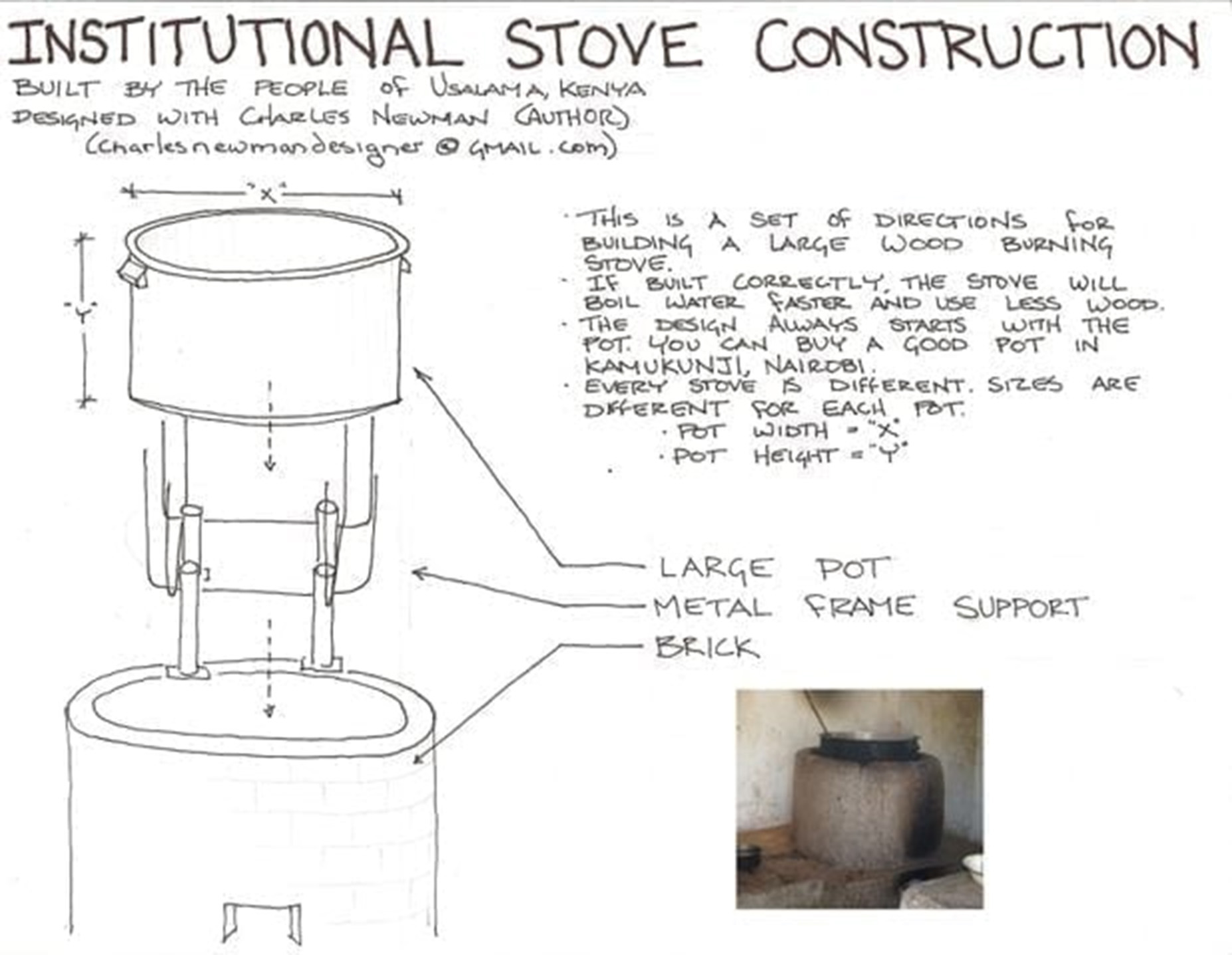
The clean-burning stove is an old warhorse of design for developing countries, and for good reason. The right stove can cut the amount of wood needed and smoke produced in a kitchen by half. In poorly ventilated kitchens, the cook’s exposure to smoky open cookfires could be about as bad as smoking a pack of cigarettes or more per day. By saving wood, efficient stoves take pressure off of forests, and the smoke reductions may actually slow the rate of climate change.
To get all of the wood-saving efficiency and smoke-minimizing power of the household cookstove on a much larger scale, we provide this guide to building a professional-sized stove for businesses, schools or clinics. The guide is hand-drawn by Charles Newman, an architect and former E4C Fellow. Mr. Newman built and installed three versions of this stove in a grade-school kitchen in Usalama, Kenya. The stoves are part of a kitchen renovation that he performed on the slimmest of budgets ($0.00). The stoves are still cooking in Usalama, and a copy of this same guide resides in the community’s library.
Here we present Charles Newman’s guide to building an efficient institutional stove.





